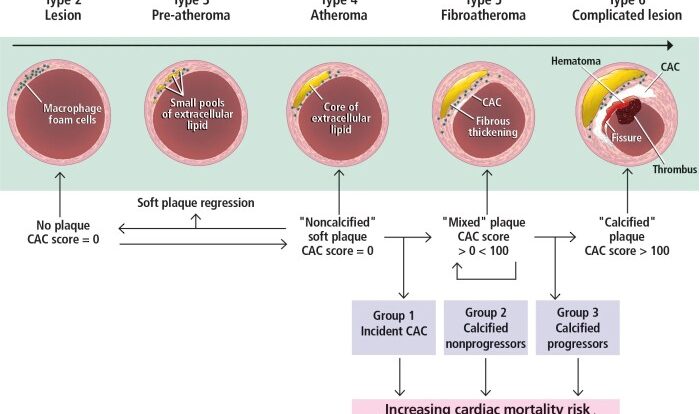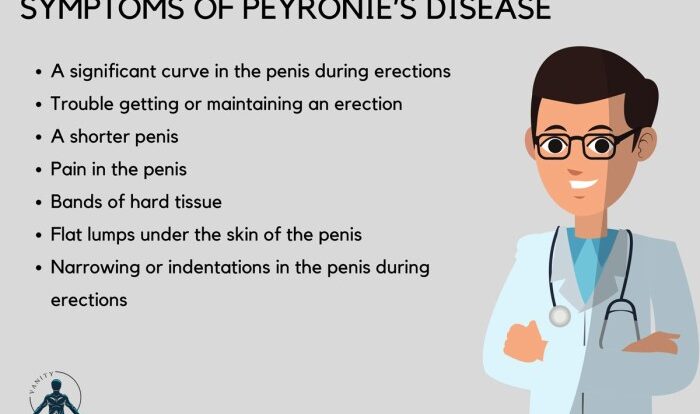Embark on a journey of recovery and renewed mobility as we delve into what to expect one year after total knee replacement. This comprehensive guide provides a roadmap for your rehabilitation, empowering you with the knowledge and strategies to navigate this transformative milestone.
From pain management to regaining mobility, this guide covers every aspect of your recovery, ensuring you are well-informed and prepared for the year ahead.
Recovery Timeline
After one year of total knee replacement, you can expect significant progress in your recovery. Most patients experience substantial pain relief and improved mobility by this time.
Regaining Mobility
Regaining mobility is a gradual process that continues after surgery. By one year, you should be able to walk comfortably without a cane or walker. You may still experience some stiffness or discomfort, but it should be manageable with regular exercise and stretching.
Returning to Work
The timing of your return to work depends on the physical demands of your job. If your job involves heavy lifting or prolonged standing, you may need to wait longer than someone with a sedentary job. Most patients can return to work within 3-6 months after surgery.
Participating in Activities
By one year, you should be able to participate in most activities you enjoyed before surgery. This includes sports, dancing, and other recreational activities. However, it’s important to listen to your body and avoid activities that cause pain or discomfort.
Pain Management
One year after total knee replacement surgery, most patients experience minimal pain or discomfort. However, some individuals may still have occasional pain, especially during activities that put stress on the knee joint. The intensity and duration of pain can vary depending on factors such as the severity of the original knee condition, the surgical technique used, and the patient’s overall health.There
are several pain management strategies that can be used to alleviate pain after total knee replacement surgery. These include:
Medication
- Over-the-counter pain relievers, such as ibuprofen or acetaminophen, can be effective in reducing mild to moderate pain.
- Prescription pain medication may be necessary for more severe pain.
- In some cases, corticosteroid injections may be used to reduce inflammation and pain.
Physical Therapy
- Physical therapy can help to strengthen the muscles around the knee joint, improve range of motion, and reduce pain.
- Exercises that are gentle and low-impact, such as walking or swimming, can also help to relieve pain.
Lifestyle Modifications
- Maintaining a healthy weight can help to reduce stress on the knee joint and minimize pain.
- Using a cane or walker can provide additional support and stability, which can help to reduce pain.
- Avoiding activities that put stress on the knee joint, such as running or jumping, can also help to manage pain.
Mobility and Function
One year after total knee replacement, individuals can expect significant improvements in their mobility and function. Range of motion, strength, and flexibility typically increase, allowing for a more active and fulfilling lifestyle.
Range of Motion
Most patients achieve a near-normal range of motion in the knee joint one year post-surgery. They can typically bend their knee to at least 120 degrees and straighten it fully. This range of motion enables them to perform daily activities such as walking, climbing stairs, and getting in and out of a car with ease.
Strength
The strength of the knee joint also improves significantly one year after surgery. Patients can expect to regain 80-90% of their pre-surgery strength. This allows them to participate in activities that require knee strength, such as squatting, lunging, and cycling.
Flexibility
Flexibility in the knee joint also increases after surgery. Patients can typically touch their heel to their buttock and perform other flexibility exercises without pain or discomfort. This improved flexibility contributes to overall mobility and balance.
Activities
One year after total knee replacement, most patients can participate in a wide range of activities. These may include:
- Walking
- Running
- Swimming
- Cycling
- Golfing
- Dancing
However, certain activities, such as high-impact sports or heavy lifting, may need to be avoided or modified to prevent further damage to the joint.
Physical Activity: What To Expect One Year After Total Knee Replacement
/knee_replacement-d94685eb137b454484c8e819c61b4a51.jpg?w=700)
One year after total knee replacement, most people can enjoy a wide range of physical activities without pain or discomfort. It’s important to gradually increase your activity level and listen to your body to avoid potential risks.
One year after total knee replacement, you may experience improved mobility and reduced pain. However, if you have a sore throat, it’s important to consider whether you should visit urgent care. Sore throats can indicate various conditions , and it’s crucial to seek medical attention if symptoms persist or worsen.
Nonetheless, following your knee replacement, you can expect continued improvement in your mobility and overall well-being.
Recommended Activities
Safe and beneficial activities include:
- Walking
- Swimming
- Cycling
- Elliptical training
- Low-impact aerobics
- Yoga
- Tai chi
Intensity and Progression, What to expect one year after total knee replacement
Start with low-intensity activities and gradually increase the intensity and duration over time. Listen to your body and rest when you need to. Avoid activities that cause pain or swelling.
Potential Risks
While most people experience significant improvement in their mobility after total knee replacement, there are some potential risks associated with physical activity:
- Overuse injuries
- Infection
- Implant loosening
By following the recommended guidelines and listening to your body, you can minimize these risks and enjoy the benefits of physical activity after total knee replacement.
Lifestyle Adjustments
Recovery from a total knee replacement involves lifestyle modifications that support recovery and promote long-term joint health. These include managing weight, wearing appropriate footwear, and implementing ergonomic modifications to reduce strain on the joint.
Weight Management
Maintaining a healthy weight reduces stress on the knee joint, promoting recovery and preventing further damage. Excess weight can strain the joint, potentially causing pain and mobility issues. Following a balanced diet and engaging in regular physical activity can help maintain a healthy weight.
Proper Footwear
Wearing supportive and well-cushioned shoes is crucial for post-surgery recovery. High heels or flat shoes without arch support should be avoided. Proper footwear provides stability and reduces strain on the knee joint.
Ergonomic Modifications
Ergonomic modifications to the home and workplace can reduce strain on the knee joint. This includes using a raised toilet seat, a grab bar in the shower, and an adjustable desk at work. These modifications promote proper posture and reduce the risk of falls.
One year after a total knee replacement, you can expect to enjoy a more active lifestyle. You’ll be able to walk, run, and participate in other activities without pain. If you’re wondering about other medical procedures, like can you get a pap while on your period , it’s best to consult with your doctor.
Returning to the topic, you may still experience some stiffness and swelling, but these symptoms should gradually improve over time. With proper care and rehabilitation, you can expect to fully recover from your knee replacement and enjoy a better quality of life.
Complications and Risks
Total knee replacement is a generally safe procedure, but like any surgery, it carries some potential complications and risks. These include:
Infection
Infection is a serious complication that can occur after any surgery. The risk of infection after total knee replacement is relatively low, but it is important to be aware of the signs and symptoms, which include:
- Redness, swelling, or drainage from the incision
- Fever
- Chills
- Pain that is worse than expected
If you experience any of these symptoms, it is important to seek medical attention immediately.
Blood Clots
Blood clots are another potential complication of total knee replacement. Blood clots can form in the legs or lungs after surgery. The risk of blood clots is highest in the first few weeks after surgery, but it can persist for several months.To
reduce your risk of blood clots, your doctor may prescribe blood thinners. Blood thinners help to prevent blood clots from forming. It is also important to get up and move around as soon as possible after surgery to help improve circulation.
Implant Failure
Implant failure is a rare but serious complication of total knee replacement. Implant failure can occur when the implant loosens or breaks. This can cause pain, swelling, and difficulty walking.If you experience any of these symptoms, it is important to seek medical attention immediately.
Implant failure may require revision surgery to replace the implant.
Patient Satisfaction and Quality of Life

One year after total knee replacement, most patients experience significant improvements in their quality of life and satisfaction with the procedure. Studies have shown that over 90% of patients report being satisfied or very satisfied with the outcome of their surgery.
This satisfaction stems from reduced pain, improved mobility, and increased functional capacity.Factors that can influence patient satisfaction and quality of life outcomes include:
- Pre-operative health: Patients with lower pre-operative pain levels and better physical function tend to have better outcomes after surgery.
- Surgical technique: The type of surgical approach used and the skill of the surgeon can impact the recovery process and long-term outcomes.
- Post-operative rehabilitation: Adherence to physical therapy and rehabilitation protocols is crucial for maximizing recovery and improving outcomes.
Long-Term Outlook
Following a successful total knee replacement, the majority of patients experience significant improvement in their quality of life and pain levels. The long-term prognosis for patients who have undergone this procedure is generally favorable, with many individuals enjoying pain-free mobility and improved function for years to come.
The lifespan of a total knee implant varies depending on factors such as the patient’s age, activity level, and overall health. On average, most implants can last for 15 to 20 years or longer. However, it is important to note that some patients may require revision surgery at some point in the future due to factors such as implant wear, loosening, or infection.
Revision Surgery
Revision surgery is a procedure to replace or repair a previously implanted knee replacement. It is typically performed when the original implant has failed or is causing significant pain or discomfort. The decision to undergo revision surgery is made on a case-by-case basis, taking into account the patient’s individual circumstances and the severity of their symptoms.
Complications and Risks
While total knee replacement is a generally safe and effective procedure, there are some potential complications and risks associated with it. These include:
- Infection
- Blood clots
- Nerve damage
- Implant loosening or failure
- Allergic reaction to the implant materials
The risk of these complications is relatively low, but it is important to be aware of them before undergoing surgery. Your surgeon will discuss these risks with you in detail and take steps to minimize them.
Rehabilitation and Exercises
One year after total knee replacement, you will continue to benefit from rehabilitation and exercises to maintain and improve your mobility, strength, and function.
Your rehabilitation program will be tailored to your individual needs and progress. It may include the following types of exercises:
Range of Motion Exercises
- Standing knee bends
- Heel slides
- Hamstring stretches
- Calf stretches
These exercises help improve your knee’s flexibility and range of motion.
Strengthening Exercises
- Squats
- Lunges
- Leg press
- Hamstring curls
These exercises help strengthen the muscles around your knee, which is important for stability and support.
Balance Exercises
- Single-leg stance
- Heel-toe walk
- Side-to-side walk
- Balance board exercises
These exercises help improve your balance and coordination, which can reduce your risk of falls.
Frequency, Duration, and Progression
The frequency, duration, and progression of your exercises will vary depending on your individual needs and progress. It is important to follow your doctor’s or physical therapist’s instructions carefully.
In general, you should start with a few repetitions of each exercise and gradually increase the number of repetitions and sets as you get stronger.
It is also important to listen to your body and rest when you need to. If you experience any pain, swelling, or other discomfort, stop the exercise and consult with your doctor or physical therapist.
Support and Resources
After total knee replacement, patients can benefit from a range of support and resources to aid their recovery and improve their quality of life.
These resources include support groups, online forums, and rehabilitation facilities, each offering unique benefits and support.
One year after total knee replacement, you can expect improved mobility and reduced pain. However, if you’re also curious about the cost of treating Peyronie’s disease, this article provides valuable insights. Returning to our topic, one year post-surgery, you may experience occasional stiffness or swelling, which can be managed with physical therapy and pain relievers.
Support Groups
- Provide a safe and supportive environment for patients to share experiences, offer encouragement, and learn from others.
- Can be local, regional, or national, and may meet in person or online.
- Examples include the Arthritis Foundation’s Support Groups and the National Knee Replacement Registry’s Patient Support Groups.
Online Forums
- Offer a convenient and accessible way for patients to connect with others who have undergone knee replacement.
- Allow patients to ask questions, share tips, and provide support to one another.
- Examples include the Knee Replacement Forum on HealthBoards and the Total Knee Replacement Forum on Inspire.
Rehabilitation Facilities
- Provide specialized care and guidance to help patients regain mobility and function after knee replacement.
- Offer physical therapy, occupational therapy, and other services tailored to the individual patient’s needs.
- Examples include inpatient rehabilitation centers, outpatient clinics, and home health agencies.
Final Summary

As you approach the one-year mark post-surgery, embrace the progress you have made and anticipate continued improvements in your mobility, function, and overall well-being. With dedication and perseverance, you can achieve your rehabilitation goals and live an active and fulfilling life.
Commonly Asked Questions
Will I still experience pain one year after surgery?
While most patients experience significant pain relief after total knee replacement, some mild discomfort or occasional aches may persist. These can be managed with over-the-counter pain relievers or physical therapy.
Can I return to all my previous activities?
Most daily activities and recreational pursuits can be resumed after one year. However, high-impact sports or activities that put excessive strain on the knee joint may need to be modified or avoided.
How long will my knee replacement last?
The lifespan of a knee replacement varies, but most implants can last for 15-20 years or longer with proper care and maintenance.





